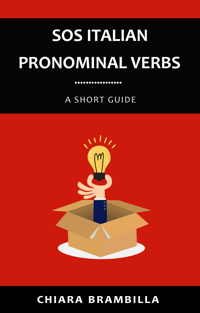
Learning Italian can feel like navigating a beautiful maze of grammar rules, cultural nuances, and linguistic traps. If you’re an English speaker learning Italian, you’ve probably made some of these common Italian mistakes English speakers struggle with most.
Don’t worry — these errors are completely normal! In this short guide, I’ll explore the 8 most frequent Italian mistakes English speakers make and show you exactly how to avoid them with practical examples and memory tricks.
Why Do English Speakers Make These Italian Mistakes?
English and Italian come from different language families with distinct grammatical structures. While both languages share Latin roots, their evolution created significant differences that trip up learners. Understanding these patterns helps you avoid the most common Italian mistakes English speakers make.
1. Mixing Up Formal and Informal “You” (Tu vs. Lei)
If you’re a beginner, you might feel tempted to use “tu” with everyone, but unfortunately, this is not very polite in Italian.
Why this mistake happens: English only has one form of “you”
Wrong: Tu sei molto gentile, signora. Right: Lei è molto gentile, signora. (You’re very kind, ma’am.)
Quick Fix: Use “Lei” with anyone over 30, professionals, or people you’ve just met. Save “tu” for friends, family, and children. There are exceptions to this rule, but if you follow it, you’ll always sound polite.
2. Italian False Friends That Confuse Everyone
These Italian false friends are among the trickiest common Italian mistakes English speakers encounter:
Attualmente ≠ Actually
- Means: Currently
- Example: Attualmente vivo a Milano. (I currently live in Milan.)
- For “actually” use: In realtà or A dire il vero
Sensibile ≠ Sensible
- Means: Sensitive (emotionally)
- Example: È una persona molto sensibile. (She’s a very sensitive person.)
- For “sensible” use: Ragionevole or Assennato
Educato ≠ Educated
- Means: Well-mannered, polite
- Example: Quel bambino è molto educato. (That child is very polite.)
- For “educated” use: Istruito or Colto
3. Italian Gender Rules: The Problema Problem
The Mistake: Assuming all words ending in -a are feminine Why It Happens: English doesn’t use grammatical gender
Wrong: La problema è grande. Right: Il problema è grande.
Common Masculine Words Ending in -A:
- il problema (problem)
- il clima (climate)
- il tema (theme)
- il sistema (system)
- il programma (program)
Memory Trick: Many words ending in -ma are masculine, especially those with Greek origins.
4. Overusing Italian Personal Pronouns
This is one of the most common Italian mistakes English speakers make because they’re used to always saying “I,” “you,” “he,” etc.
Wrong: Io vado al lavoro, tu vieni con me? Right: Vado al lavoro, vieni con me?
When to Use Italian Pronouns:
- For emphasis: Io vado, tu resti (I’M going, YOU stay)
- For clarity: Lei parla italiano (SHE speaks Italian – generally implied, I or others don’t.)
- After prepositions: Viene con me (He’s coming with me)
5. Italian Direct vs. Indirect Object Pronouns
The Mistake: Confusing “lo/la” (direct) with “gli/le” (indirect)
Wrong: Ho dato il libro a Marco. Lo ho dato ieri. Right: Ho dato il libro a Marco. Gli ho dato il libro ieri.
Quick Reference:
- Lo/La = him/her/it (direct object)
- Gli/Le = to him/to her (indirect object)
Memory Trick: If you can ask “to whom?” the action is done, use indirect (gli/le).
6. Literal Translation Traps in Italian
These literal translations create embarrassing common Italian mistakes English speakers should avoid:
“Make sense”
Wrong: Fa senso (It’s disgusting!) Right: Ha senso (It makes sense)
“I’m excited”
Wrong: Sono eccitato (sexually aroused – avoid!) Right: Sono entusiasta or Non vedo l’ora (I can’t wait)
7. Italian Pronunciation: The Rolling R Challenge
The Issue: Either not rolling R’s at all or overdoing it
Practice Words:
- carro (cart)
- terra (earth)
- correre (to run)
Tip: Start with single R sounds, then gradually work up to the double RR (trilled R).
In my online course for beginners, Sos Italian Grammar in Action, I offer valuable tips on pronouncing the Italian R and the sound GLI.
8. Italian Preposition Confusion
Italian prepositions don’t generally match English patterns, leading to common mistakes:
- Wrong: Abito in Roma. Right: Abito a Roma (I live in Rome.)
- Wrong: Ascolto alla musica pop. Right: Ascolto musica pop (I listen to pop music.)
- Wrong: Ti aspetto per due ore. Right: Ti aspetto da due ore (I’ve been waiting for you for two hours.)
- Wrong: Sono da New York. Right: Sono di New York (I’m from New York.)
- Wrong: Dipende su cosa intendi. Right: Dipende da cosa intendi (It depends on what you mean.)
How to Avoid These Common Italian Mistakes
- Practice with Native Content: Listen to Italian podcasts, watch Italian movies with subtitles
- Use Language Exchange Apps: Practice with native Italian speakers who can correct you
- Keep a Mistake Journal: Write down errors and review them weekly
- Focus on One Rule at a Time: Don’t try to master everything simultaneously
- Read Italian News: Start with simple articles and gradually increase complexity
- Use Italian Grammar Apps: Consistent daily practice builds muscle memory
- Join Italian Learning Communities: Online forums provide support and correction
- Practice Thinking in Italian: Try to form thoughts in Italian instead of translating
Conclusion: Embrace Your Italian Learning Journey
If you’re a native English speaker, making these common Italian mistakes is completely normal — it’s actually a sign you’re pushing your comfort zone and actively learning!
The key is recognizing these patterns, practicing corrections, and being patient with yourself. Every Italian speaker, including natives, makes mistakes sometimes.
Remember: Sbagliando s’impara — “By making mistakes, one learns.”
Keep practicing, stay curious, and soon these common Italian mistakes will become distant memories in your language learning journey.
Ready to improve your Italian? Start by focusing on just one mistake from this list each week. Small, consistent improvements lead to major fluency gains!
If you found this article useful, don’t forget to share it with the world and to like our Facebook Page!
Credits:
Image by Gemini





 How to Build Vocabulary with Italian Root Words
How to Build Vocabulary with Italian Root Words

